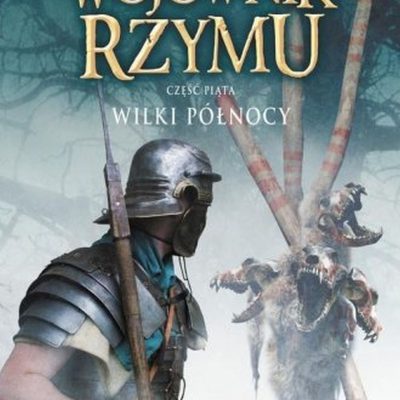The book “Wolves of the North” is the fifth part of the historical novel by Harry Sidebottom, published by Rebis. The action of the novel takes place in the year 263 CE and is a continuation of the fate of Balista and his family. This time, the romanized barbarian will come into contact with the savage tribes of the north and face a mysterious murderer on his own team.
The main character, after defeating the warlike Alamanni in the previous volume, is directed by Emperor Galien even further north to redeem the captured Romans and stop the invasions of barbarian peoples on the northern borders of the Roman Empire, including the amazing and wild Heruli. The ballista again receives an extremely difficult task that will cost a lot of effort and sacrifices. To make matters worse, other members of the expedition die in mysterious circumstances in the Ballista unit, which only adds drama to the already difficult situation of the heroes.
The first thing that catches my eye, and personally offended me the most, is the linearity of the action, which is something new in Harry Sidebottom’s novel. In the previous parts, the action was moved from place to place, which allowed to maintain the dynamics and curiosity of the reader. We were treated to many places and the volatility of the action. Here is something completely new. We accompany a Roman commander on a journey, who acts as an envoy of Rome. It seems that sometimes the author tried to enrich the action with various events and dialogues. However, to a large extent, it did not change my perception of the whole part, which I consider to be the worst of the whole series.
Naturally, the fighting style, descriptions of battles and the customs of the northern tribes (including elongating the heads by the Heruls) are shown in extreme detail and interestingly. As always, we are treated to many historical terms, which allows you to better find yourself in the plot of the book and ancient times. The author expertly presented the fighting style of mounted archers, which was widely used in the wide steppes of Eastern Europe. As always, the book comes with a map of the Empire, a glossary and a list of characters, which allows us to better follow the action.
The author, as in the previous parts, shows off his great knowledge of those times. The book is also a quick and pleasant read, despite the sometimes felt monotony in action. Interestingly, the author ends this part similarly to the previous ones. The thread breaks off, which only raises assumptions about the further fate of Ballista and his family. The author decided to continue the story of the adventures of a Romanized Briton, which will certainly please many of his die-hard fans. I personally hope that the next part will regain the freshness of the previous books and that the author will confirm his mastery in writing historical novels.


